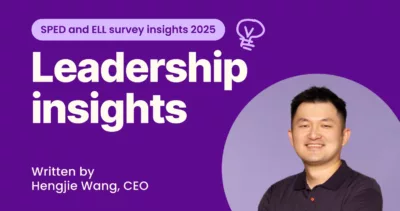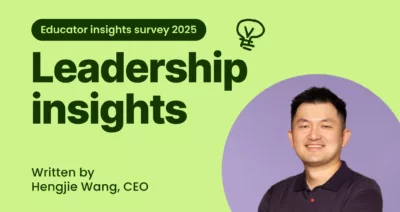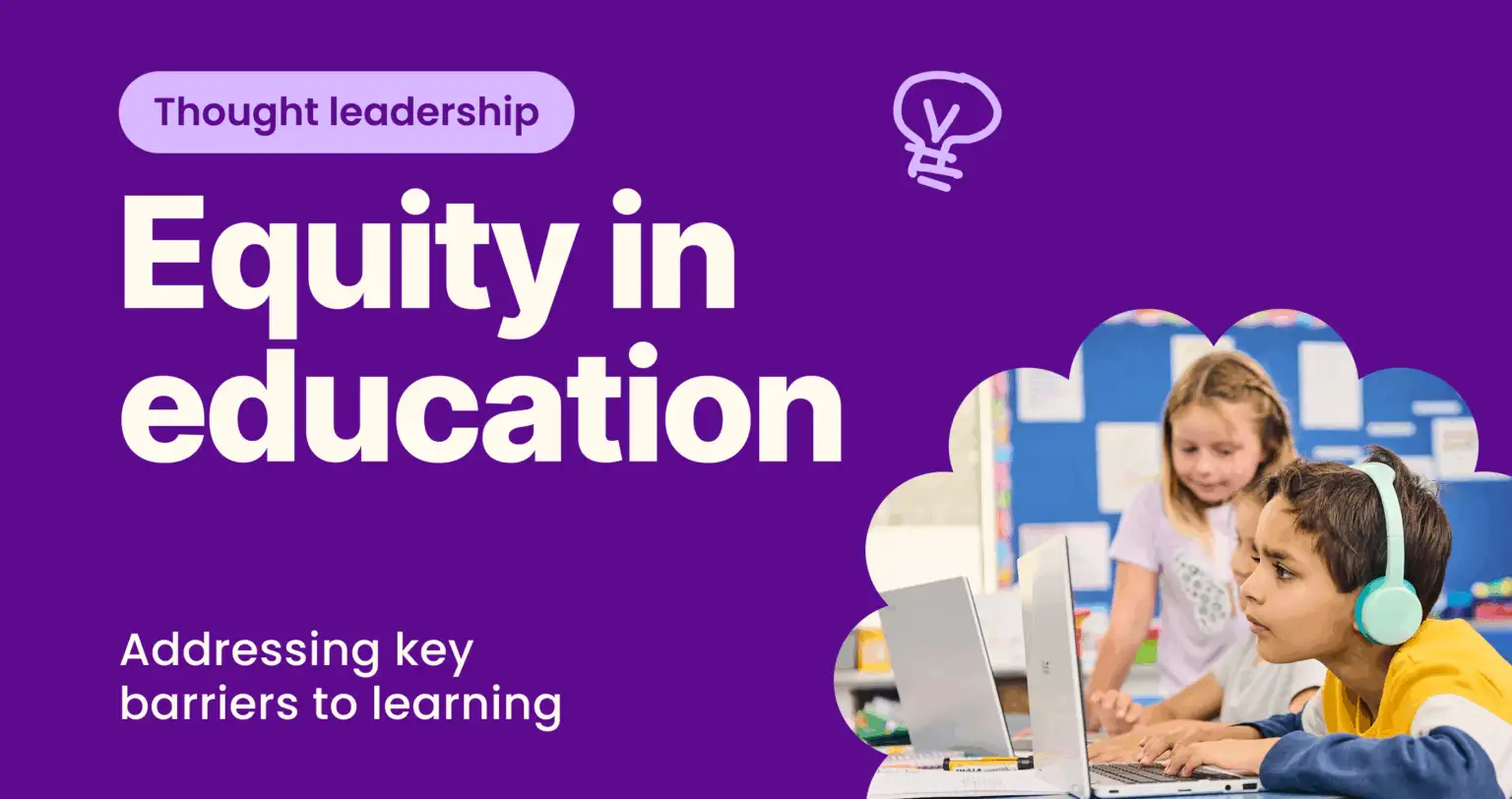In the ever-evolving landscape of education, the concept of equity is a critical imperative. Ensuring equitable learning opportunities for every student is at the heart of fostering inclusive, thriving educational systems.
In 2025, district administrators and school leaders must be more aware than ever of the barriers that hinder learning and the strategies that can mitigate these obstacles. From socioeconomic disparities, to language barriers and the increasing demands of special education, addressing these inequities is not just about fairness; it is about providing every student with the tools they need to succeed in a rapidly changing world.
The call for equitable learning
Education has always been a cornerstone of social progress, but as the world changes, so too must our understanding of what constitutes equitable education.
The U.S. has seen an increasing focus on equity in learning with recent policy shifts, such as the White House Executive Order on Advancing Educational Equity (April 2025). This executive order emphasizes the need for personalized, equitable learning environments for all students, particularly marginalized groups. The rationale behind this policy is simple: when we ensure that all students, regardless of background, have access to the same high-quality learning experiences, we unlock their potential for success.
However, achieving true equity is not without challenges. As we move into 2025, district and school leaders must address key barriers to learning that disproportionately affect students in underserved communities. These barriers, ranging from access to technology to the complexities of special education, require urgent attention and thoughtful action.
Confronting the digital divide
One of the most significant barriers to learning in 2025 is the digital divide, particularly in lower-income households. Despite the ubiquity of technology in the classroom, many students still lack consistent access to high-speed internet and personal devices at home. According to a 2024 report by the National Education Association (NEA), approximately 16% of students in the U.S. live in households with inadequate access to technology, and this gap is more pronounced in rural and economically disadvantaged areas.
Districts must therefore focus on providing equitable access to digital tools, not just for schoolwork, but for learning that extends beyond the classroom. Technologies that can be used both in and outside of school, like Kami’s AI-powered ‘Understood’ tools, allow students to continue their learning uninterrupted, even when they are at home or in transitional spaces. These tools break down barriers by offering flexible, personalized learning experiences that adapt to the needs of each student.
Language and literacy challenges
In increasingly diverse classrooms, English Language Learners (ELLs) represent a substantial portion of the student body. In fact, a report from the U.S. Department of Education in 2024 found that 10% of students nationwide are classified as ELLs. These students face unique challenges, including navigating academic content in a second language, which can hinder their ability to perform on par with their peers.
Equity in education demands that ELLs receive the support they need to succeed. This can be achieved through tailored language support tools that offer real-time translation, simplified content, and built-in scaffolding. In 2025, it is vital for educators to provide the necessary resources for ELL students, such as interactive platforms that offer text translation and language adjustment features. Kami’s built in translation tools are specifically designed to assist these students by offering multi-language translation capabilities and text to speech reading supports, creating an environment where language is no longer a barrier to learning.
Meeting the needs of diverse learners
Special education students, who have varying needs across the spectrum, require personalized, accessible learning solutions to thrive. As of 2024, over 13% of public school students in the U.S. receive special education services (U.S. Department of Education). These students often face significant challenges in accessing general education content due to learning disabilities, physical disabilities, or cognitive impairments.
To meet the needs of these students, schools must integrate more inclusive technologies that can personalize learning, such as adaptive reading and writing tools, as well as systems that allow for real-time monitoring and feedback. Kami’s upcoming Companion tool, designed for all students including SPED students and ELL, will further support personalized learning plans and accommodations, ensuring that all students, regardless of their needs, have the tools to succeed in the classroom.
Socioeconomic status
While access to technology and special education resources are vital, perhaps the most fundamental barrier to learning is socioeconomic status. Students from lower-income families often face instability at home, food insecurity, and limited access to extracurricular educational opportunities. The effects of poverty are far-reaching, influencing everything from attendance to cognitive development. According to a 2024 report by the Brookings Institution, students from low-income families are twice as likely to fall behind academically compared to their more affluent peers.
Equitable education policies must take into account these broader social and economic factors. District leaders should collaborate with local organizations to ensure that students in need have access to essential resources, including after-school programs, food assistance, and technology.
Furthermore, it is critical to address the systemic inequalities in school funding that disproportionately impact low-income communities. By implementing these policies, leaders can reduce the impact of poverty on education and support the success of students who face the greatest challenges.
Teacher preparedness
Teachers are the backbone of any educational system, but in order to support diverse learners effectively, they need ongoing professional development and access to the right tools. According to a study from the Education Week Research Center (2023), 45% of teachers report that they feel inadequately prepared to teach students with diverse learning needs, especially in classrooms with high numbers of ELL and special education students.
To ensure equity, schools must provide teachers with the necessary training to address the diverse needs in their classrooms. Professional development focused on differentiated instruction, inclusive teaching practices, and the use of educational technology will enable teachers to better serve all students. Platforms like Kami provide educators with accessible tools to personalize learning, making it easier for them to support students with varying needs while reducing the workload associated with lesson planning and grading.
Moving toward equity: Implementing effective strategies
District leaders and school administrators must focus on addressing the key barriers in order to create an equitable learning environment. Implementing data-driven strategies that identify gaps in student performance and engagement is crucial for targeted intervention. Furthermore, fostering partnerships with families and community organizations will ensure that students receive the support they need both in and out of school.
As we move into 2025, equity in education should be seen as a fundamental right rather than an optional addition to the curriculum. By investing in technology, professional development, and community partnerships, school leaders can break down the barriers that hinder student success and create a more equitable learning environment for all.
For those interested in learning more about Kami Companion and how it can support equitable learning for diverse students, we encourage you to reach out to your Kami contact for more information and to sign up for the pilot program.
Sources:
- National Education Association. (2024). The Digital Divide in Education: A Report on the Status of Technology Access in Schools.
- U.S. Department of Education. (2024). Annual Report on the Status of Special Education Services.
- Brookings Institution. (2024). The Impact of Socioeconomic Status on Educational Outcomes.
- U.S. Department of Education. (2024). English Language Learners in U.S. Schools: Data and Trends.
- Education Week Research Center. (2023). Teacher Preparedness and Professional Development in 2023: A National Survey.
Blogs you may also like

The state of SPED and ELL technology in 2025

Leadership Insights: Reflections from CUE 2025



